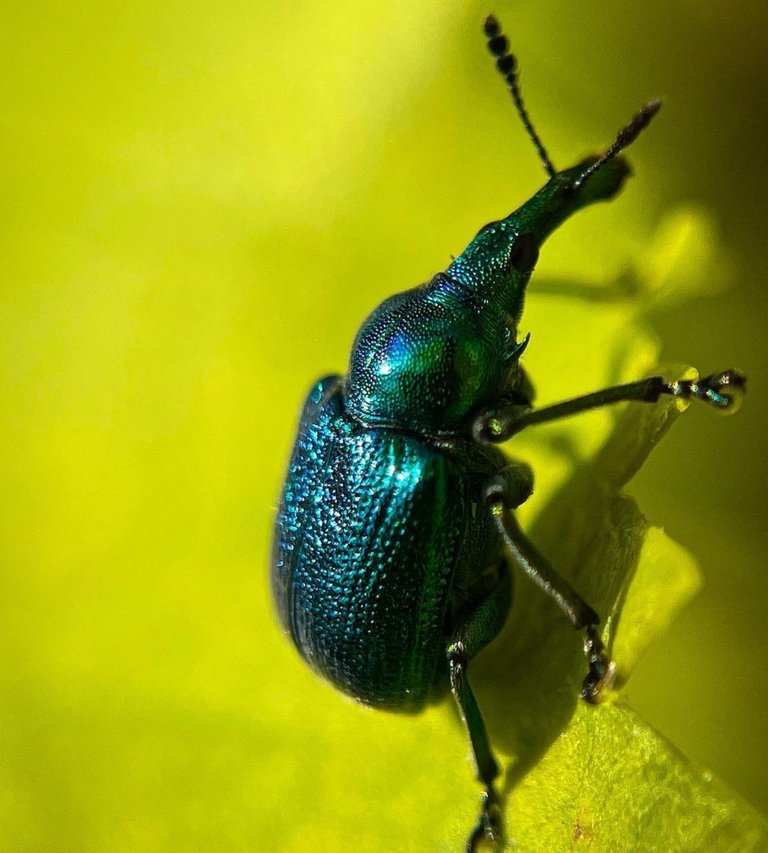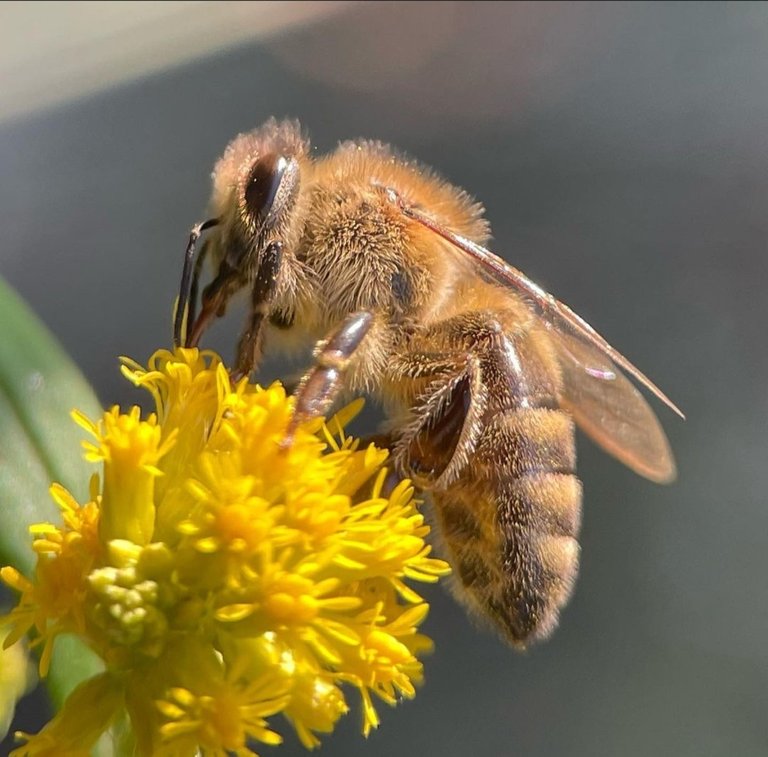
Birch pipe wrench the most beautiful of the weevils I have ever met, although it cannot be formally called a weevil because it belongs to a different family, but still looks very much like a weevil, so for me it will always be a weevil As I said earlier, it belongs to the family of tube whirligigs, which has more than 2,100 species.
Length 5.5-9 mm, that is in general baby. There are several color forms: bright green, bright blue (sooo I would like to meet this), golden green, blue-green, reddish, bronze, bronze-green, rarely green with blue wings or blue-green with green wings. In the photo, a male. The male has 2 spines on the forechest (well, or simply 2 spikes on the "shoulder", although it is impossible to say, but it is more understandable for the masses). If you look closely at the photo, you can see this thorn) Larva of cloudy white color, legless, thick, with sparse yellow setae, slightly curved, by the end of development reaches 6-8 mm. Pupa white, open, 5-6 mm long.
Adults spend the winter under fallen leaves or in the soil. In the spring, the first adults appear in April-May, climb to the treetops, where they feed on buds, young leaves, eating the narrow strips of flesh from the top. They feed on deciduous trees.
Mating and laying of the first eggs begins after the appearance of the first leaves. The peak of egg laying occurs in May. After mating, the female twists 6-8 leaves into a tube and lays eggs in it, usually 4-15 eggs in one tube. Fertility of each female - 50 eggs. After 8-20 days, depending on weather conditions, larvae are born. They feed on the leaves of the tube. After some time, the larvae emerge from the folded leaves, bury themselves in the soil to a depth of 3-10 cm and make earthen cradles in which they pupate. The pupal stage lasts 10 days.

In the photo a rider from the genus Enicospilus. This genus includes more than 700 species. It belongs to the family of their pneumonids, or real riders, which presumably includes at least 60 thousand. species, of which up to 30 thousand are described. Body length up to 3 cm.
Active at dusk and at night. Endoparasitoids of butterfly caterpillars, such families as scoops, crested newts, peacocks. With the help of an ovipositor, the riders lay eggs in the body of the caterpillar. Typically, they are placed above the victim and insert the egg into her body, then lay eggs in it. The larvae, after hatching, feed on the tissues and organs of the victim, gradually killing her. Adults are winged free-living insects, which, like ordinary hymenoptera, feed on the nectar of flowers. They also need daily water consumption, so stay close to water bodies.
Adults live 1-2 months. Some species overwinter as adults, which prolongs their life to 10 months.

Honey bee (Apis mellifera)
It belongs to the family of real bees, or bee, which has 5,000 species. The size of the worker bee is 1.2-1.5 cm, the uterus - 1.8-2.5 cm.
The bee can fly at a speed of up to 65 km / h without cargo and 20-30 km / h with cargo, while making 200-250 wingspan per second. They can fly 3-4 km from the hive. Complex eyes consist of a large number of small eyes (3000-4000 in the uterus, 4000-5000 in the worker bee, 7000-10000 in the drone), each of which perceives part of the object in front of them, and all together perceive the full image. There are 3 simple eyes on the scalp. Bees see polarized light, which allows them to determine the direction of the sun, even when it is hidden behind clouds.
The olfactory organs are on the tendrils. Some of the hairs that cover the body perform the function of touch. The senses of smell and touch allow you to navigate in a dark nest.
The taste buds are on the proboscis, in the pharynx, on the joints of the tendrils. The hearing organs are located on the torso and legs. Also on the tendrils are organs that perceive humidity, heat and cold, the level of carbon dioxide, which allows you to control the microclimate of the nest, optimal for the development of larvae in honeycombs.
It's one of those very unique beetles you take good pictures of